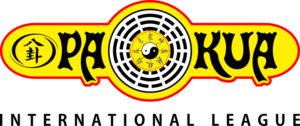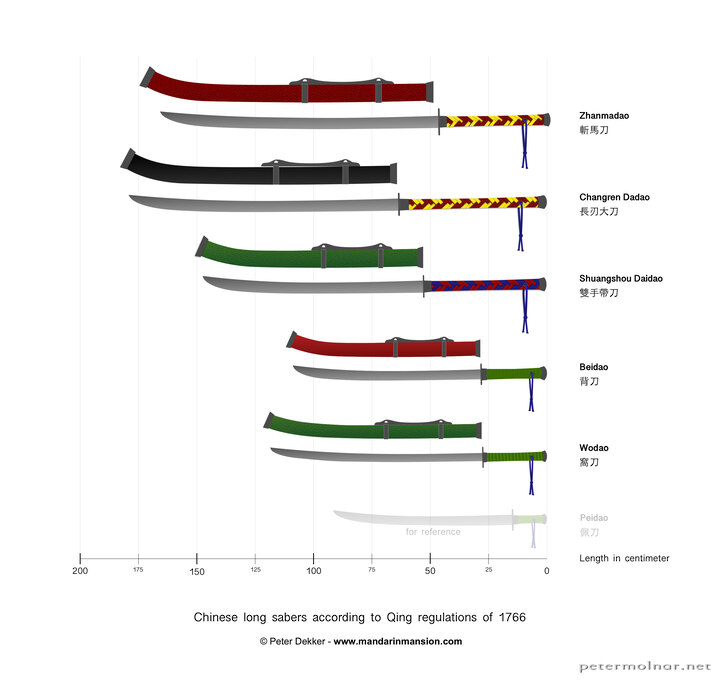Note: this is not an official statement in any form; it's merely my own, personal view and opinion on Pa-Kua.
Eons ago I did ITF Taekwondo, followed by a some no-name branch of karate, then ITF Taekwondo again, then years of medieval re-enactment with swords and archery, then a few months of Yang style Tai-Chi, including the martial aspect and their broad sword.
I did the Tai-Chi for the shortest time, but left a forceful impression on me - mainly due to my teacher, Johnny Burke1, because it felt whole; it radiated out into my everyday life. Karate was rather mindless, Taekwondo was way too competition oriented, re-enactment was fun for a while, but soulless, especially after knight fights became a thing. Unfortunately Johnny left Mei Quan, and I left London and Tai-Chi.
In 2017, as a company summer program, someone organised oriental archery for us. This lead me to Pa-Kua2 and their traditional Chinese archery. There is a Hungarian man, Lajos Kassai3, who also made his own research in the 80s, in order to revive ancient Hungarian horseback archery, and to create a version of the recurve bow they used to use. I met people following his teachings and it shows vast similarities to the archery Pa-Kua teaches. Around 20094 China started to popularise folk archery as well - there are now people writing about and practising reprised Manchurian archery5, which also shares common techniques. While it's not the same, I have no doubts that of the archery of Pa-Kua works, and that it is a Chinese style archery.
Soon I joined their martial art classes as well; occasionally acrobatics and weapons.
There are countless wushu movies out there indicating there is, or there used to be, more to kung fu than movements: acupressure points, healing, philosophy, sometimes religion, and so on, but it seems like during their way out of China, many of these aspects fell off, and the world is now left with fighting styles without their foundation. There are exceptions - such as the aforementioned Mei Quan Academy of Tai-Chi in London, or, in my opinion, the Pa-Kua International League. I've mentioned archery, martial art, and weapons, but it also teaches Chinese medicine, massage, acupressure, acrobatics, etc., so unlike a traditional dojo, it offers a lot more.

FAQ
Is Pa-Kua a Chinese martial art?
Pa-Kua split it's teachings into disciplines. Some of these are based on traditional Chinese knowledge (energy, reflexology); others are infusions of mainly Chinese and other far Asian practice (acrobatics, edged weapons, martial art, sintony, cosmodynamics); yet others are mainly results of historical reconstruction (archery); whereas some are completely modern, for modern times (rhythm).
The main influence of martial arts discipline - based on the actual elements being taught and some personal research - is certainly Chinese, but not strictly one specific Chinese style.
I saw videos calling Pa-Kua fake.
During the past decade some people embraced the idiotic stand that MMA is the only efficient martial art. MMA is training gladiators.
Traditional martial arts was meant to be a way to kill fast and efficiently. They changed since, especially internal styles. Would Pa-Kua be efficient against MMA? No, it probably won't. It's not the goal. It's not a hard, competition style; you should be comparing it to Xingyi, Bagua, Tai-Chi, and the other, mainly internal styles instead.
The goal is to practise, to find your balance, learn to control one's self in every aspect, both physically and mentally.
Going a bit further: the authenticity of a martial art is a whole spectrum of turmoil. A lot of Chinese styles were nearly wiped out first in the 17th century, then in the mid 20th century. People tried to keep them alive, some of them by passing it strictly within a family - this resulted in hundreds, if not thousands of streams of a formerly organised styles6. It's not that surprising not to be able to find someone based on a pinyin version of a Chinese name on Google, but it doesn't mean they never existed. Many villages in rural China only got electricity 10-15 years ago, let alone the monasteries in the mountains, and I seriously doubt historical paperwork was digitised at all. (I've been to villages and monasteries like this.) This problem goes way beyond this by the way; finding translated Chinese knowledge is a massive pain, let alone origin stories in a world where history is quite flexible.
The best option you have it go decide for yourself. Go; meet some actually high belts; talk to them, train with them. See what and how they teach, and decide for yourself.
I've heard that Pa-Kua is just a pyramid scheme.
When it comes to belts and ranks, it's an organisation.
The international school needs funding, and knowledge needs people who can dedicate their lives to teaching and research. Since there is no membership fee, all the activities that are controlled by the school - progress with belts, intensive courses, etc - are paid directly to the school who distributes it they way they want to. It's not that different to non-profit organisations.
Local practices are completely in the hands of the leading instructor/master. You pay them directly, they rent/own the building, etc. That is just like and standard dojo.
Pa-Kua has Japanese uniform, so it can't be Chinese!
If you judge a school based on their clothing, you're doing it wrong.
Buying Chinese silk robes was a hard stunt anywhere before aliexpress, so I'm not going to blame anyone for utilising something more widely available - the karate gi.
Pa-Kua teaches katana, so it can't be Chinese!
Everyone knows that the katana is a Japanese weapon. What people don't know is that China had a lot of very similar weapons in the family of dao swords: changdao, dadao, zhanmadao, wodao, etc7.

Yes, for practical reasons, Pa-Kua utilizes katana-like blades8; the historical similarities between weapons allows it do so. The differences between these weapons are tiny, and katanas and bokens are far more accessible - and cheaper -, than, for example, a wodao.
As you progress, the weapons practice will soon incorporate knife(s), spear, baguadao, jian, etc. as well.
As I mentioned at the beginning, I did European medieval re-enactment for years, and my main weapon was one handed straight sword. Boosted by this I took a jian course at Pa-Kua and I have to admit, it's a ridiculously different weapon, and it's extremely hard to handle. There are good reasons why it's at higher levels. The katana-like weapons are much more straightforward to learn - not to master, just to learn -, which is probably the reason why the school decided to start with those.
Is it true that you can buy (black) belts in Pa-Kua?
If you've done some kind of martial you've been conditioned to identify a belt with a certain degree of capability, and that to achieve a belt, you need to pass a physical exam, with clearly defined requirements.
With a solid and unified methodology, a Pa-Kua School practitioner is sure to learn the same content as any other student, regardless of the city, state, or country of practice. Even if you move or go on an exchange, you will be able to continue your learning in the same way as you would at your school of origin. The founding master developed the teaching method in the International League so that the colored belts would present distinct topics to each belt, with the black belt being the union of all this learning. To make an analogy, it would be like in each colored belt you would receive a construction material with instructions, so that in the black belt you can build your house knowing exactly what each one of those materials is for. This means that the black belt does not symbolize that the student has achieved "mastery" of the techniques, but that he is now ready to begin the study resulting from the union of these resources, seeking to develop this mastery. This concept is important because many people idealize that a Pa Kua black belt is the representation that one has reached the top, when in fact it indicates the beginning of a more thorough study, where the student finally finds himself in possession of all the elements he needs for the study of Pa Kua in that modality. In the black belt, from the first to the end of the eighth degree it takes at least 36 years, and from there on other progress cycles begin with the red and white belts. Within the regular class, the more graduated must always adapt to the less graduated, trying to help them in their learning and improvement. This reinforces the family philosophy present inside the school, where the older brother helps the younger brother. Pa-Kua - International League
Here, the belts are mainly theory-indicators. They show what can safely be taught to its wearer and what things the wearer knows in theory already. It's completely normal if a green or grey belt Pa-Kua practitioner has never done a full contact fight.
You can achieve these belts through intensive courses. These are face to face trainings with multiple masters in a dense timeframe. You will most probably lack practice, but the theoretical knowledge will be there.
So the short answer: no, you can't simply buy belts, but you might be allowed to participate in intensive training to learn faster.
I'm not convinced.
If you're looking for something extremely orthodox, rigid, and stict the school is probably not for you. Similarly, if you want to fight, beat people, do hard contact, train with ex-soldiers, it's probably also not the place.
I met a few of the regional leaders, and they definitely have a wide and interesting knowledge. To access this knowledge, you need to pay. This may not be the idealised, imagined way of learning, but it's always been like this, and making money from teaching is never easy9.
Summary
The Pa-Kua International League is not simply another martial art dojo: it offers a broad knowledge that used to accompany martial arts.
Did it start out as a fake? I’ll never know. But in that 40 years since it's establishment it grew, and today there's a lot of proficiency within the school.
It's not strictly Chinese and has other far Asian influences.
It's expensive compared to other schools, and there are ways to progress mainly on theoretical knowledge, but you always get something for your tuition fee.
Belt colour doesn't indicate the same thing as in most Westernised martial arts.
The martial arts discipline is an internal style. Do not expect contact fights early on.
Every single high ranking member I met was talented and had a lot to offer. However, their main focus may not be martial arts, due to the split across disciplines, so don't judge anyone just by their martial arts skill. There are, and always were, scholar monks as well.
I'd encourage to try the whole spectrum of Pa-Kua: taste every discipline and get the full picture. Only after that decide if it's for you or not.
If you disagree, agree, want to discuss, have questions, spotted a mistake, feel free to get in touch with me; contact options are at the bottom of the page.
http://thelastmasters.com/a-few-thoughts-on-emei-mountain-kung-fu/↩︎
http://www.ancientpages.com/2018/09/19/deeper-look-into-chinese-swords-throughout-the-history-of-the-dynasties/↩︎
https://medium.com/@osergionauta/pa-kua-e-o-estudo-dos-sabres-chineses-e79b1baca413↩︎
http://time.com/4587078/kung-fu-martial-arts-hakka-hong-kong-preserve/↩︎
(Oh, by the way: this entry was written by Peter Molnar, and originally posted on petermolnar dot net.)